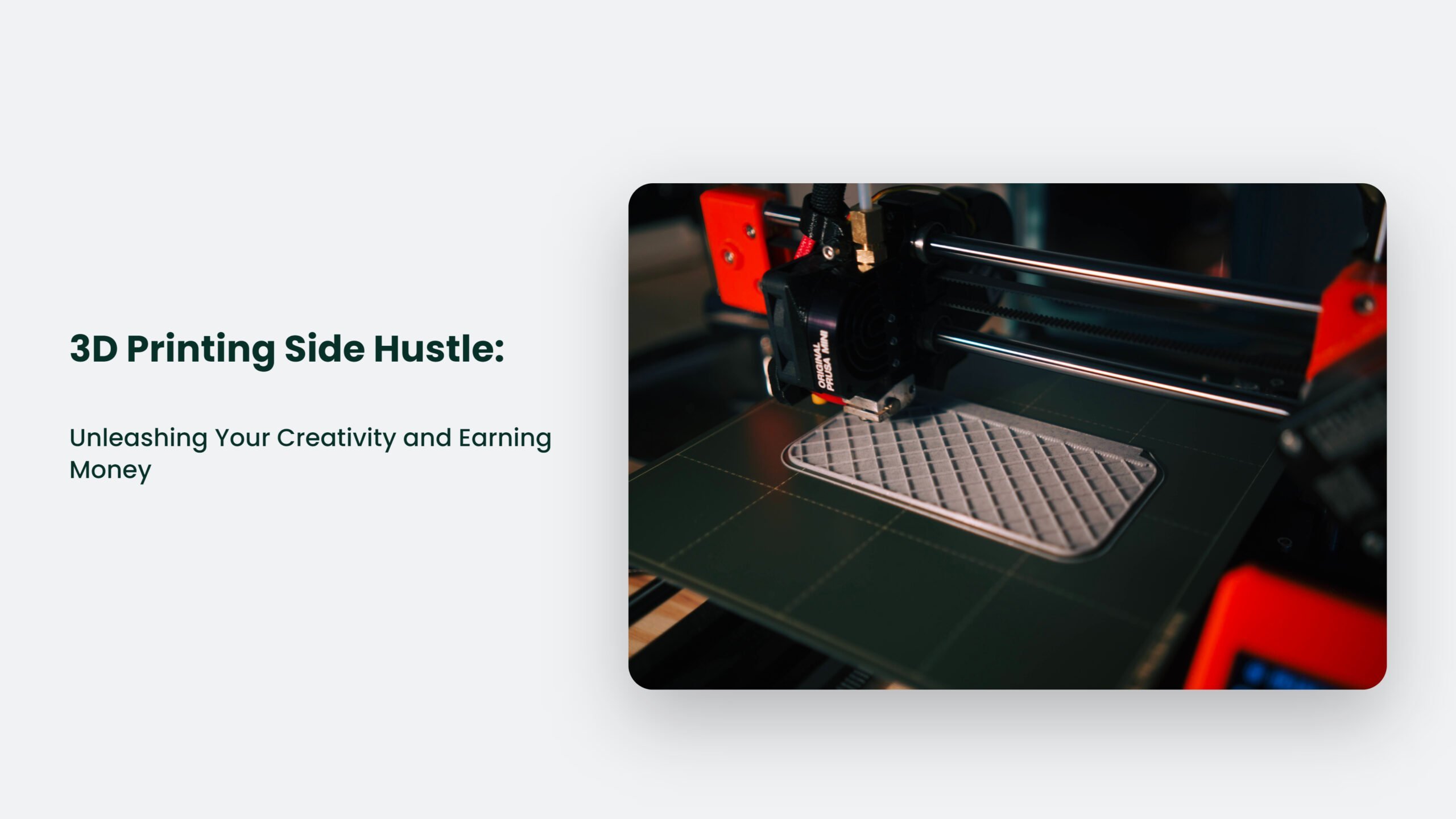Do you have a passion for creativity and technology? Are you looking for a way to turn your hobby into a side hustle? Look no further than 3D printing. In this comprehensive guide, I will show you how to start your own 3D printing side hustle and turn your passion into profit.
Why 3D Printing?
3D printing is a rapidly growing industry, with new and exciting possibilities emerging every day. There are endless opportunities for creativity and innovation, from product design to prototyping. Whether you’re an artist, engineer, or tech enthusiast, 3D printing offers a unique and accessible way to bring your ideas to life.
Moreover, the demand for 3D printed products is increasing, with businesses and individuals seeking unique, custom-made items. It presents a huge opportunity for those looking to start their side hustle and make money from their 3D printing skills.

Steps to Start a 3D Printing Business:
Getting Started with 3D Printing
The first step in starting your 3D printing side hustle is to invest in a good quality 3D printer. While there are many affordable options on the market, it’s important to choose a printer that can produce high-quality prints and handle the demands of your projects.
Once you have your 3D printer, it’s time to start learning and practising. Many online resources and tutorials are available to help you master the art of 3D printing. Experiment with different materials and techniques; be bold and make mistakes. The more you practice, the better you’ll become.
Finding Your Niche
One of the great things about 3D printing is that there are endless possibilities for what you can create. The opportunities are endless, from jewellery and toys to engineering parts and prosthetics.
To find your niche, consider what you’re passionate about and what kind of projects you’d like to work on. You may have a passion for fashion and want to create unique, 3D printed accessories. Or you’re an engineer who wants to use 3D printing to prototype new inventions.
Once you’ve found your niche, start exploring the possibilities and experimenting with different materials and techniques. Don’t be afraid to be creative and try new things. The more unique and innovative your designs are, the more successful your side hustle will be.
Marketing Your 3D Printing Business
Once you have a portfolio of projects, it’s time to start marketing your 3D printing business. There are many ways to reach potential customers, including online marketplaces, social media, and local events.
Online marketplaces such as Etsy and Shapeways are great places to showcase your work and reach a large audience. Social media is also powerful, allowing you to share your projects and engage with potential customers.
And don’t forget about local events, such as craft fairs and technology expos, where you can show off your work and network with other 3D printing enthusiasts.
Pricing Your 3D Printed Products
One of the biggest challenges in starting a 3D printing side hustle is pricing your products. It’s important to strike a balance between affordability and profitability.
To determine the price of your products, consider the cost of materials, the time and effort involved in creating each item, and the demand for your designs.
Remember, pricing your products too low will leave you with little profit, while pricing them too high may make them unaffordable for potential customers. Take the time to research comparable products and pricing, and consider offering discounts or promotions to attract customers.
Marketing Your 3D Printing Side Hustle Business:
Marketing your 3D printing side hustle is crucial to its success. A well-executed marketing strategy can help you reach potential customers, build your brand, and ultimately grow your business. Here are some effective marketing strategies for your 3D printing side hustle:
- Utilize Online Marketplaces: Online marketplaces such as Etsy and Shapeways are great places to showcase your work and reach a large audience. These platforms make it easy for customers to find and purchase your products and offer various tools and resources to help you market your business.
- Leverage Social Media: Social media platforms like Instagram, Facebook, and Twitter are powerful tools for marketing your 3D printing side hustle. Use these platforms to showcase your work, engage with potential customers, and build a following. Share behind-the-scenes photos, showcase your finished products, and offer special promotions to your followers.
- Attend Local Events: Local events such as craft fairs, technology expos, and maker markets are great opportunities to network and showcase your work. Attend these events to meet potential customers, showcase your products, and build relationships with other 3D printing enthusiasts.
- Offer Customization: One of the unique selling points of 3D printing is the ability to offer customization. Use this to your advantage by offering custom-made products that cater to your customer’s specific needs and preferences.
- Utilize Influencer Marketing: Influencer marketing involves partnering with social media influencers to promote your products to their followers. Find influencers who align with your brand and target audience and offer them a discount or commission for promoting your products.
- Offer Discounts and Promotions: Offer special discounts and promotions to attract new customers and incentivize repeat purchases. Consider offering a discount for first-time customers or a loyalty program for repeat customers.
- Network with Other 3D Printing Enthusiasts: Building relationships with other 3D printing enthusiasts can help you grow your business and learn new skills. Attend local meetups, join online forums, and participate in online communities to network and collaborate with other 3D printing enthusiasts.
Remember, the key to a successful marketing strategy is to find what works best for your business and your target audience. Experiment with different marketing tactics and adjust your strategy to ensure the best results.
Frequently Asked Questions:
What kind of 3D printer should I buy for my side hustle?
The best 3D printer for your side hustle will depend on your specific needs and the type of projects you plan to work on. Consider factors such as print quality, build volume, and ease of use when making your decision. Research and compare different models; don’t be afraid to invest in a higher-end printer if it will help you produce better-quality prints.
Conclusion:
So, don’t let the limit of your imagination hold you back from exploring the endless possibilities of 3D printing and turning your side hustle into a thriving business. You might just be the next “big thing” in 3D printing.
In the words of Steve Jobs, “Innovation distinguishes between a leader and a follower.” So, be a leader and innovate in the world of 3D printing. The possibilities are endless, and the profit potential is huge. So, what are you waiting for? Let’s get printing!




